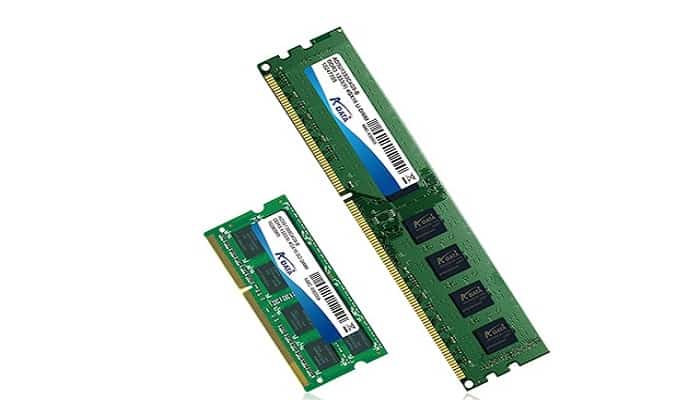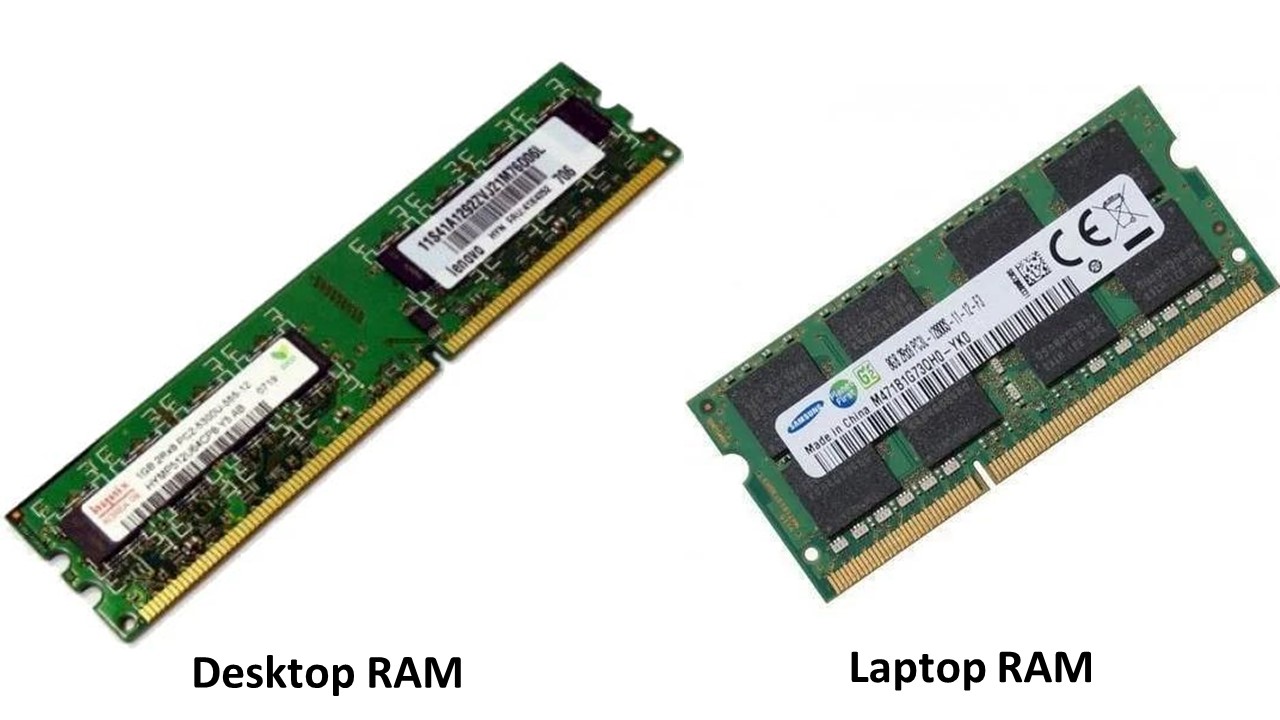If you want to choose between a desktop and laptop RAM and then decide which system you would invest in, you will need to first make a proper comparison between the two RAM types. This will enable you to know which will be more suitable for you.
However, without knowing the differences between the two you will not be able to make a proper comparison. This article will provide all the assistance and knowledge you need about their differences.
In This Article
KEY TAKEAWAYS
- The size and number of pins in a desktop RAM is higher than those in the RAM used in a laptop computer.
- The desktop RAM can be expanded due to the larger number of slots supported by the motherboard and the larger space available but the laptop will not offer such upgradability.
- A desktop RAM will usually support high-end computing tasks but laptop RAM will be usually good for basic computing tasks.
6 Differences Between Desktop and Laptop RAM

Though they sound the same they have a lot of differences in size, compatibility, memory slot, and many more.
The performance provided by Desktop Computer RAM is better than the RAM in the Laptop Computer. But in the end, it all depends on the user’s choice and budget.
1. Size
Desktop computers RAM can be measured from about 100, 168, and 184. The total number of pins found in a desktop RAM is 240.
The length is about 4.5 inches. It is because of the vast space provided on the desktop computer. It is because of the big physical size and more pin configuration.
On the other hand, laptop RAM measures 72, 100, and 104. Which brings the total number of pins on the laptop to be about 204.
The average length is 3 inches. Therefore, this means that the desktop RAM is a bit bigger in size than the laptop RAM because of the compact space in a laptop.
2. Bios Support
RAM on the desktop computer is very much needed. A maximum amount is required to run the operating system. Users who are interested in playing games or using applications where the requirements are minimum.
Also, these requirements are registered in GB or Gigabytes. For desktop computer RAM, it is frequently from 1GB to 8GB. One can even expand the RAM according to one’s choice.
Laptop computers can support up to 16GB of RAM. The laptop starts lagging once it reaches the maximum RAM supported by the operating system.
3. Memory Slot
Types of computers come with more expandability options than laptop computers. One can add more than two slots for RAM memory on the desktop computer.
Therefore, desktop computer RAM can be expandable for most gamers, editors, and ones doing intensive tasks for expanding then RAM.
The laptop comes with only 2 slots. That is the reason it cannot be expanded. It is due to the limited space provided in a laptop which leaves less expansion of the RAM.
4. Compatibility
Desktop computer RAM is bigger because of the size of the desktop computer. It is not interchangeable.
One cannot use a laptop RAM on a desktop RAM slot. Some desktop computer adaptors allow using laptop RAM. The older generation of RAM is incompatible with the newer versions.
Laptop RAM will only be compatible with the laptop computer.
5. Utility
Desktop Ram is best for the gamers who like to expand the computer memory to meet the gaming needs. It can also be the best for programmers, for graphic designers, and one’s who do not need to carry their computer outdoors.
They can also opt for desktop RAM. Lastly, the ones who always upgrade their desktop system because it contains more slots help in better performance. The RAM slots in desktop computers can provide the user more than 2 RAM slots.
Laptop RAM is made small to fit in the laptop case. It is because it can be best for traveling and is portable.
Those who use the computer for basic tasks such as watching videos, browsing the web, sending emails, for regular and office work on the laptop. Then the RAM is better for users like them.
6. Price
The price of the desktop RAM is less than the laptop RAM. A good heatsink DDR4 RAM price starts from 59.85 USD for 8GB and 16GB it starts from 113.05 USD.
The price of the laptop RAM is more than the price of the desktop RAM. Because of its portable and small size DDR4, laptop RAM price for 4 GB starts from 35.9 1 USD and for 8GB starting from 62.5 1 USD.
Which is Better – Laptop or Desktop RAM?

Both RAM on laptop and desktop computers highly depend on the motherboard requirements of the computers.
It is important to know the requirements of the computer before buying any type of memory.
Laptops use a different type of RAM known as Small Outline Dual In-line Memory Module or SODIMM. One can understand with the name that it is smaller than the regular DIMM and uses integrated circuits.
This RAM is mostly used in laptops and notebooks which is an integrated component.
Because of the limited expansion of space, it is also found in networking hardware like routers and high-end office printers.
It is roughly half the size of a regular DIMM which makes it more flexible when designing the small memory slot.
The only component which can be upgraded is the RAM or the memory because they are placed on an easily accessible area on the laptop motherboard.
The desktop RAMs are usually not compatible with the laptop due to size mainly and the number of pins as well as the slot on the motherboard.
However, it is possible to use a Laptop RAM in a desktop, if other conditions support.
Laptop memory can be expanded and it is a very usual thing if it is not soldered onto the motherboard.
Desktop RAMs are however more easily expandable. There may be even extra slots on the motherboard due to the larger size.
Therefore, it should be quite clear to you by now that if you want easy upgradability desktop RAM will be ideal than a laptop RAM.
Conclusion
Both RAM for desktop computers and RAM for laptops work the same when in the computer system. If one uses computers outdoors then one can opt for a laptop.
For students, tourists, travelers, and others who look for portability. But the ones who love gaming, programming, staying indoors then getting a RAM for the desktop can be better for them.
Also, the desktop computer’s RAM can be more expandable than a laptop computer’s RAM because it is placed in one place and cannot be portable. There, it is up to the user’s choice and preferences.